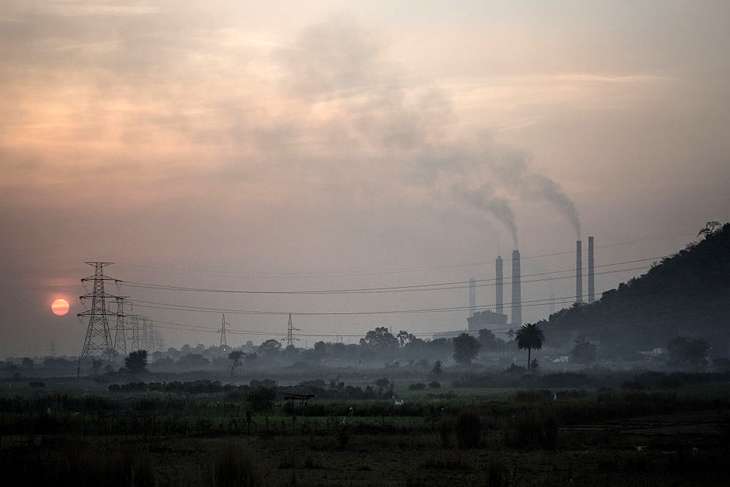Another Bhopal? Sonbhadra-Singrauli has all the ingredients

Have you heard of the Sonbhadra-Singrauli belt? This region at the cusp of Uttar Pradesh, Chhattisgarh and Madhya Pradesh is billed by many as India's energy capital. What nobody talks of is how this belt is on the brink of a disaster that can match the Bhopal disaster.
The methyl isocyanate leak at the Union Carbide plant in Bhopal led to India's biggest industrial disaster on 2 December, 1984. Such was the scale of the leak that horror stories haven't stop coming out three decades on. But have we learnt any lesson?
Doesn't seem so if we look at Sonbhadra-Singrauli. The 40 square-kilometre area hosts some half-a-dozen power plants - both coal-fired and hydro-electric. Their combined capacity of about 21,000 megawatts (MW) cater to a large part of the country.
Now private groups such as Reliance, Lanco and Essar as well as state-owned utilities are set to add 20,000 MW more by setting up several projects in the next five years.
The belt also houses several other industries like an aluminum, chemical and carbon factories of the Birlas and a cement factory owned by the Jaypee Group.
But these impressive numbers tell just one side of the story.
Farmer tragedies
The Sonbhadra-Singrauli belt is also known for the plight of its farmers whose land has been ruined by mining and limestone.
This region is also home to over five lakh Adivasis. In fact, Sonbhadra is the only district of Uttar Pradesh where tribals are in a majority.
However, the fruits of industrial activity have barely reached these people with most of them find it difficult to make ends meet.
The region is traversed by eight small rivers. With the area accounting for nearly 16% of the total carbon emission in the country, it is of little surprise that all the river waters are completely polluted.
In other words, every inch of this land is prone to a catastrophe like Bhopal. The greed of industrialists, politicians and bureaucrats is not the only reason for this risk.
The media is equally to blame for this state of affairs. It will highlight Sonbhadra-Singrauli's issues only after a disaster. Otherwise, it is happy to look the other way.

Poison factory
The chloro chemicals division of Kanoria Chemicals & Industries Ltd, located at Renukoot, produces some of the most dangerous substances for industrial use. It was acquired by the Aditya Birla group in 2011 at a cost of Rs 830 crore.
It is estimated that the waste produced by this factory kills 40-50 people every year on average. Most of this waste is released directly into the Rihand dam. And the effect is telling on the surrounding population.
Thousands of residents in hundreds of villages around the Rihand Dam have been completely or partially crippled.
In December 2011, 20 people of the Kamari Dand village in Sonbhadra district lost their lives after using the water from the Rihand Dam. Thousands of cattle had also met with the same fate.
Investigations proved that the chemicals released from the Kanoria Chemicals Factory had poisoned the water. Yet, the issue did not attract enough media attention.
Earlier, a gas leak from the Kanoria plant had killed five people in January 2005. The accident reportedly occurred because of the negligence of company officials.
Villages after village in Sonbhadra are falling prey to the fatal disease of Fluorosis, a chronic condition caused by excessive intake of fluorine compounds.
There is hardly a person in villages like Padwa Kodawari and Kusumha, who has not been afflicted with some of kind of physical deformity due to this disease.
Hazard called mercury
The power plants of Sonbhadra-Singrauli emit 1.5 tonnes of fly ash every year. This fly ash is composed of mercury that is extremely harmful to the human body. Traces of mercury have been found in the samples of human hair, blood and even crops of this region.
The locals have no option but to live with the impact of this pollution. The sun here is paled with the dust coming out of towering chimneys. A blanket of haze engulfs the air as soon as the evening sets in.
The pollution has not even spared the still-to-be-born babies. The death of children during the pre-pregnancy period has become a regular occurrence.
Yet, the state-run Obra and Anpara power plants are operating without any environmental clearance. The Central Pollution Control Board has ordered a close down stating they are 'too dangerous.'
However, nobody seems baffled with such blatant flouting of norms. The seeds of a Bhopal-like tragedy are being sown, not only in Sonbhadra-Singrauli belt but in every corner of the country.
The state as well as the Union Government is avoiding accountability in the name of development. For now, the Sonbhadra-Singrauli region is nothing more than a hen laying golden eggs for them.
While one Warren Anderson may have gotten away, there are many more in the making.
First published: 7 June 2016, 1:37 IST




![BJP's Kapil Mishra recreates Shankar Mahadevan’s ‘Breathless’ song to highlight Delhi pollution [WATCH] BJP's Kapil Mishra recreates Shankar Mahadevan’s ‘Breathless’ song to highlight Delhi pollution [WATCH]](https://images.catchnews.com/upload/2022/11/03/kapil-mishra_240884_300x172.png)

![Anupam Kher shares pictures of his toned body on 67th birthday [MUST SEE] Anupam Kher shares pictures of his toned body on 67th birthday [MUST SEE]](https://images.catchnews.com/upload/2022/03/07/Anupam_kher_231145_300x172.jpg)






